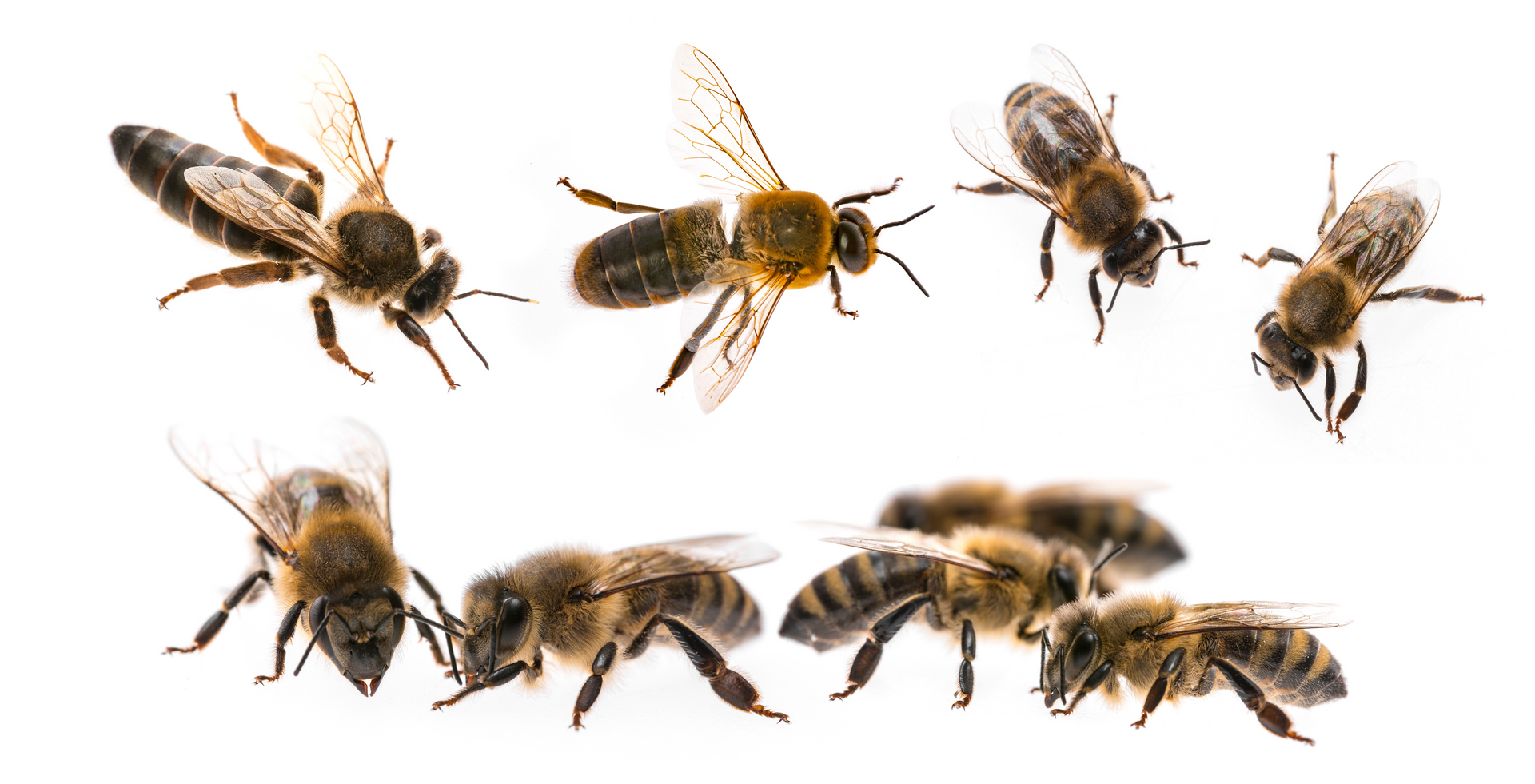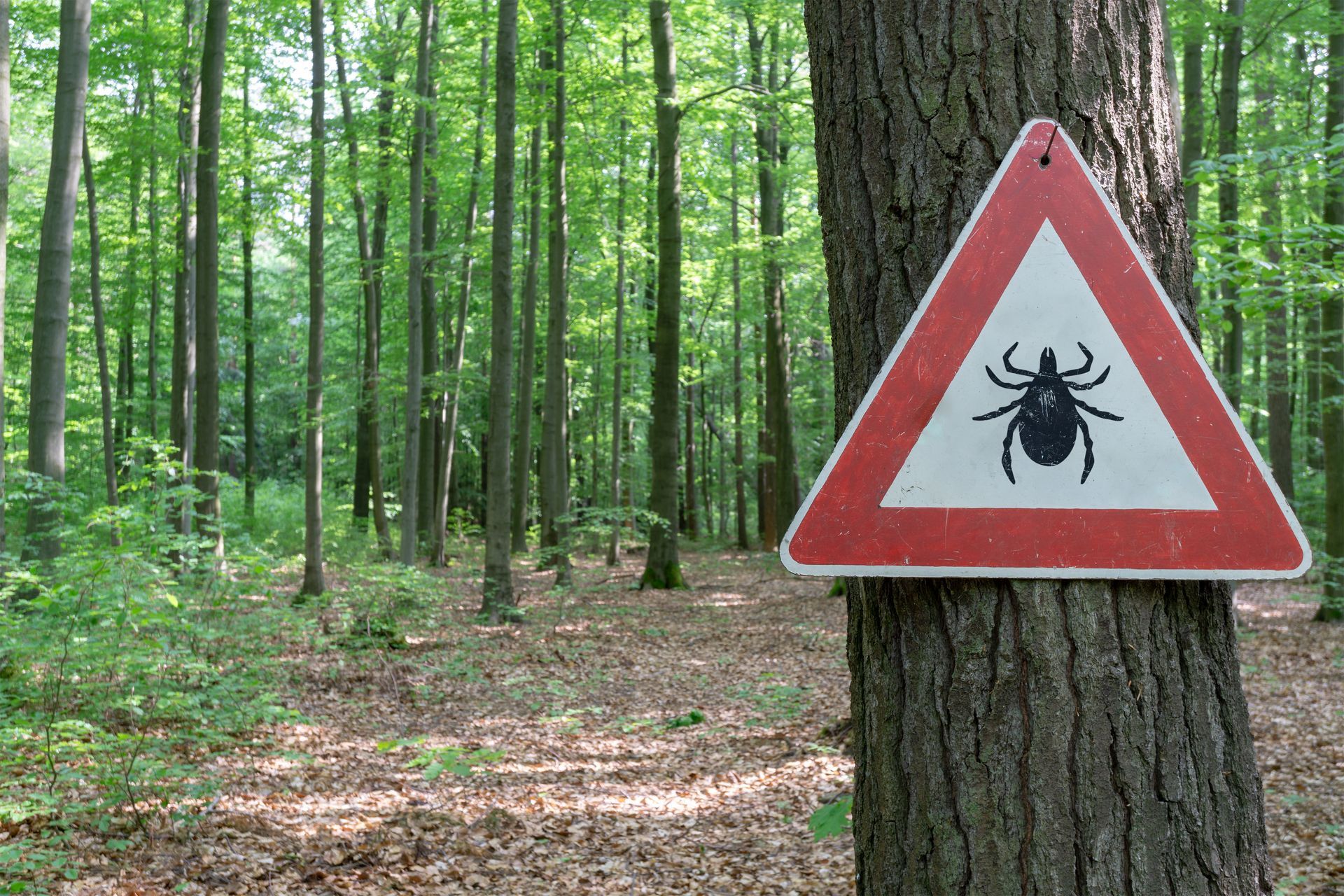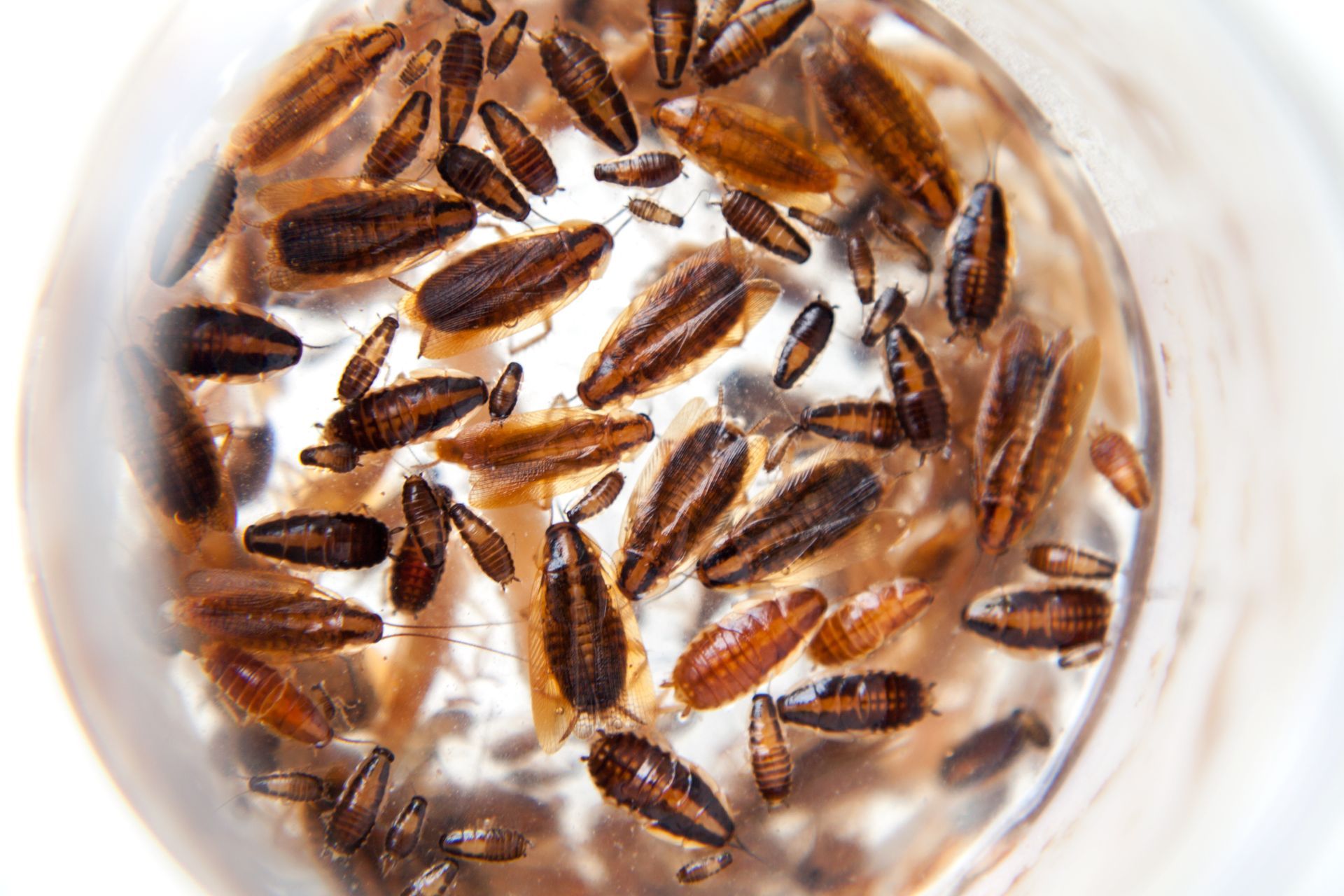Different Types of Ticks Found in the United States
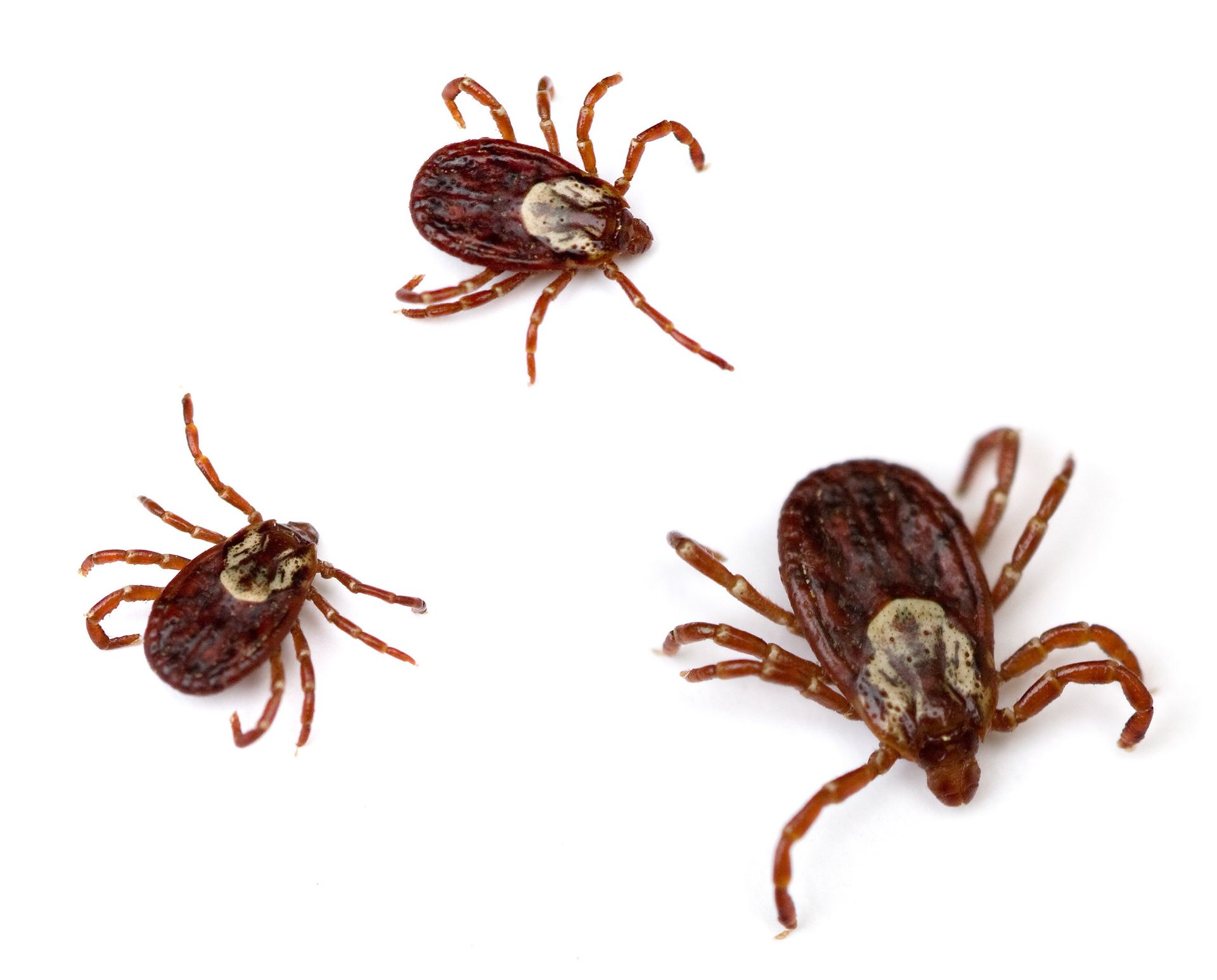
There are various species of ticks found in the United States and each is capable of transmitting different diseases. Lyme disease is most often associated with ticks, but there are numerous other tick-borne diseases to be aware of. Recognizing the type of tick in your area is crucial as it can help in identifying potential diseases if bitten. This knowledge can provide a starting point for diagnosis and treatment if one becomes ill after a tick bite. Preserving the tick after a bite can also be beneficial in identifying the tick species. If a tick attaches itself and a person subsequently develops symptoms, the saved tick can provide valuable information to medical professionals. While it might be tempting to dismiss all ticks as the same, understanding the differences among species and the diseases they can transmit is essential for public health.
How to Identify Different Types of Ticks
Identifying different types of ticks can be challenging for non-experts, but there are unique features that can help distinguish most tick species. Ticks can often be mistaken for other small insects, but ticks typically have two body segments — a fused head that lacks antennae and an abdomen without wings. Tick larvae have six legs before they fully develop, while nymphs and mature adult ticks have eight legs. For this reason, ticks are not considered insects but rather belong to the same class as spiders and scorpions.
Primary Types of Ticks
In the United States, the two primary families of ticks are hard ticks and soft ticks. There are over 700 species of hard ticks and 200 species of soft ticks that exist around the world. Of those species only a small percentage are known for feeding on humans and being capable of transmitting tick-borne diseases. These two types of ticks have distinct life cycles, with each stage resulting in changes in size and appearance. Hard ticks and soft ticks differ not only in their physical characteristics but also in their behavior and the diseases they can transmit. This makes it critical to distinguish between them when considering tick-borne illnesses.
Hard Ticks (Ixodidae)
Hard ticks, scientifically known as Ixodidae, have a life cycle that begins with an egg laid by a female tick. Once hatched, a larva emerges that must find a small mammal or bird to feed on. After feeding, the larva drops to the ground and undergoes a molting process, emerging as a nymph. These nymphal hard ticks then seek larger hosts for feeding, after which they drop off and molt into adults. The entire life cycle of hard ticks spans one to two years, depending on the species. Interestingly, a hard tick's bite is usually painless, and the feeding process can last from several hours to days, or even weeks.
Soft Ticks (Argasidae)
Soft ticks, or Argasidae, share a similar life cycle to hard ticks. It starts as an egg, before hatching into larvae, feeding, and then molting into a nymph. However, soft ticks differ in that their nymphal stage may include as many as seven phases, each requiring a blood meal. The life cycle of soft ticks can last from months to years, depending on the species. Their bites are typically painless and brief, lasting only 15-30 minutes, which makes them harder to detect. It's important to note that both adult and nymphal ticks can transmit diseases. In some areas, the infection rate from nymphal ticks is even higher than that of adult ticks.
Common Tick Species
Below we will explore the most common tick’s species in the U.S. It is important to understand where they are located, when they are most active, and what kind of threat they pose.
American Dog Tick (Dermacentor Variabilis)
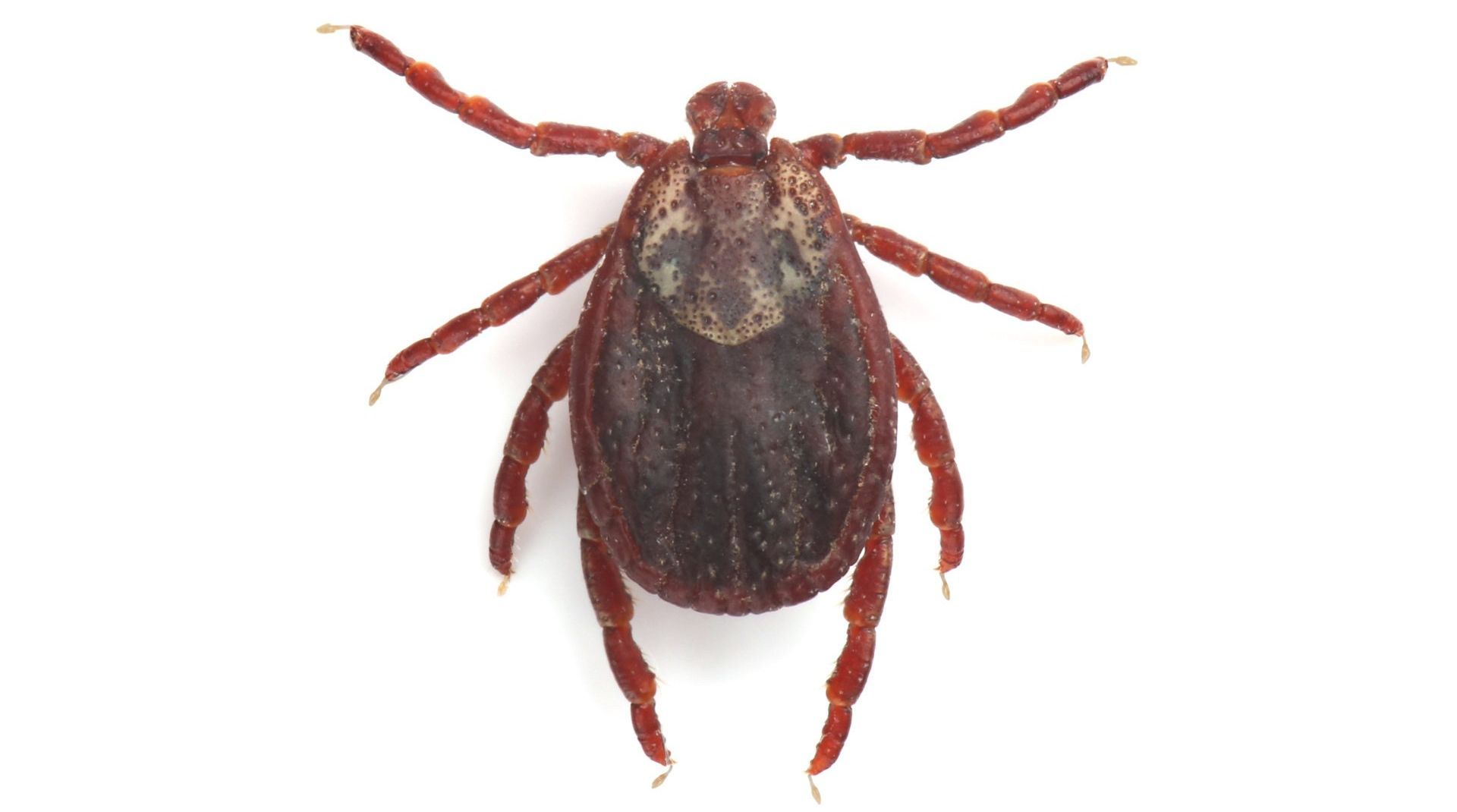
The American dog tick, also known as a wood tick, is predominantly found along the Pacific Coast and east of the Rockies and as far north as Alaska. They are most commonly found in areas with little or no tree cover like grassy fields, meadows, and scrubland. These ticks have a dark brown body with females featuring an off-white shield while adult males are typically mottled in appearance. The American dog tick is a primary vector for several diseases including rocky mountain spotted fever (caused by rickettsia rickettsii), tularemia (caused by francisella tularensis), and other diseases caused by ehrlichia and anaplasma. They can also cause tick related paralysis. It's important to note that both nymphs and adults can transmit diseases, although larvae and nymphs rarely attach to people or pets. The greatest risk of being bitten by these ticks, particularly the adult females looking to lay eggs, occurs during the spring and summer months. Once they feed, adult females can lay over 4,000 eggs in their 2-year lifespan.
Black Legged Deer Tick (Ixodes Scapularis)
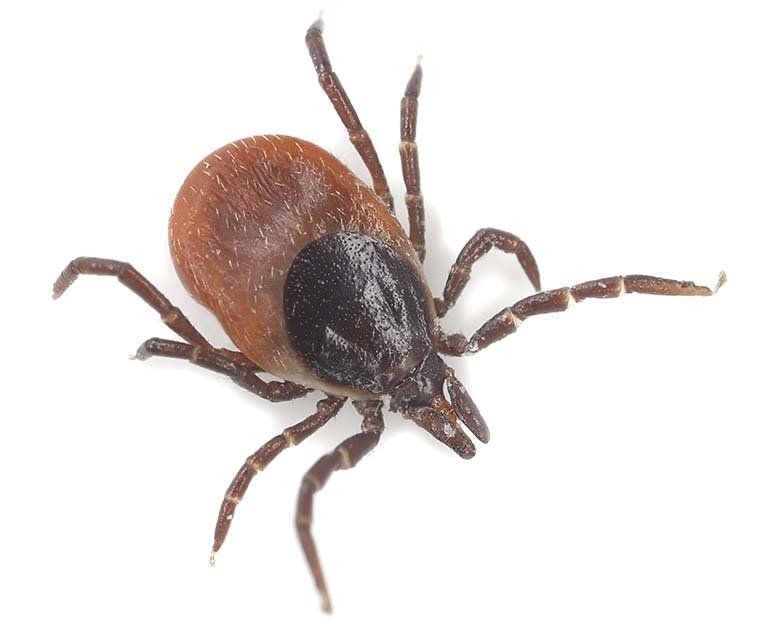
The blacklegged deer tick, or Ixodes Scapularis, is easily identifiable by its reddish-orange body, black shield, and dark black legs. This tick species’ presence has grown over the last two decades and they are now found throughout the eastern states, north-central states, and southern states of the U.S. They inhabit a variety of ecosystems that are suitable for birds and mammals that range in size from rodents to small predators and even animals as big as deer and livestock. The nymphs and adults are known to bite humans and pets who come into contact with grass, brush, leaves, and logs.
This tick is known to transmit several pathogens including borrelia burgdorferi and b. mayonii, which cause Lyme disease. They also transmit relapsing fever borreliosis, ehrlichia muris, anaplasma phagocytophilum (anaplasmosis), babesia microti (babesiosis), multiple species of rickettsia, deer tick virus, and Powassan virus. This tick is also suspected of transmitting bartonella to humans. These ticks are most active in the spring, summer, and fall which is when they pose the largest threat.
Brown Dog Tick (Rhipicephalus Sanguineus)
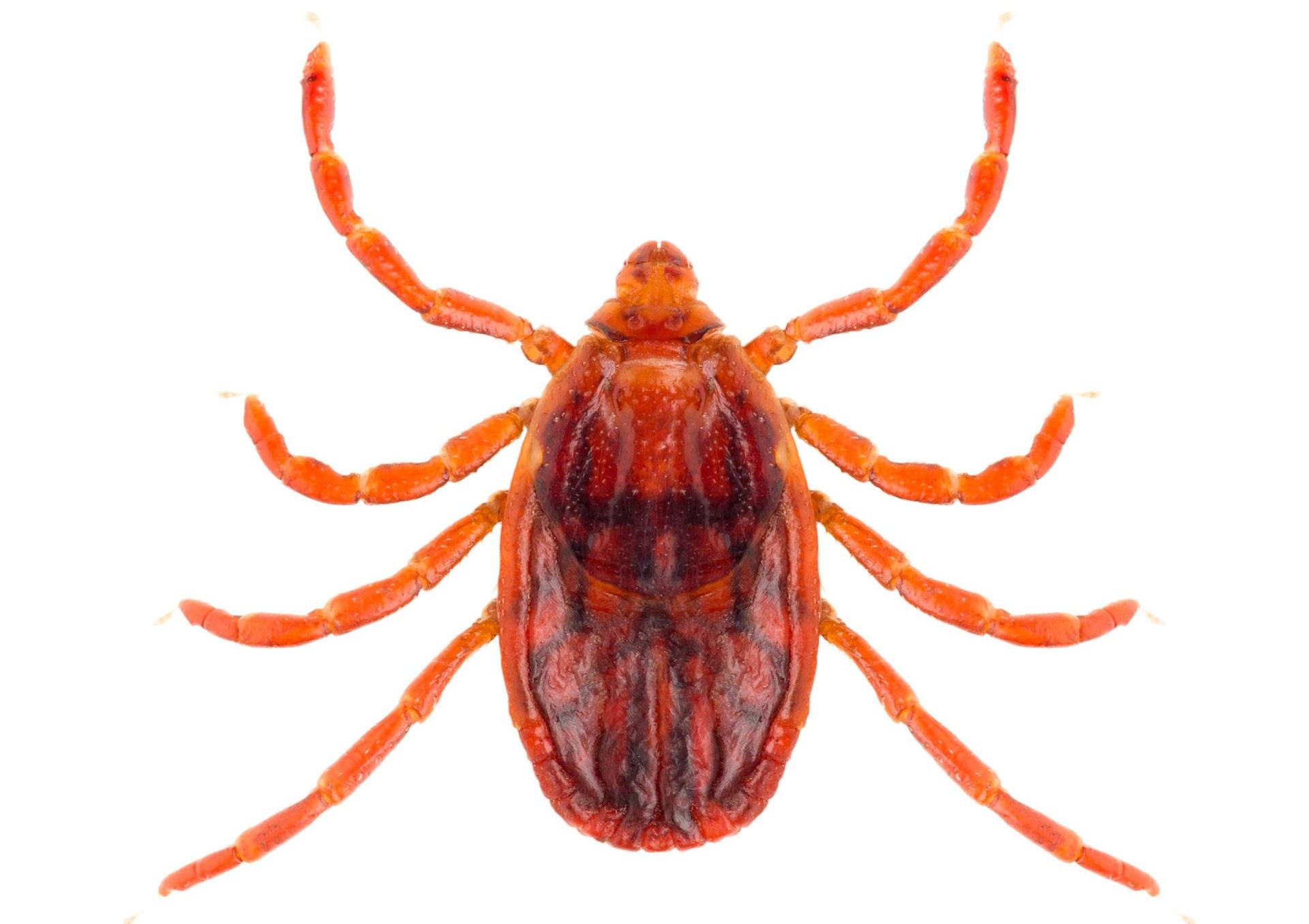
The brown dog tick is a reddish-brown tick that differentiates itself from other tick species by having a narrow body that tapers to a point where the body meets the head. This tick species is found throughout the United States but are far more common in southern states. Dogs are the primary host for the brown dog ticks which means that they can be found infesting places like dog beds and kennels. These ticks can also spend their entire life cycle indoors which makes them a hardier species that can withstand dry conditions.
The brown dog tick is known to transmit several pathogens, including rickettsia rickettsii, which causes rocky mountain spotted fever in dogs and humans. They can also transmit several dog specific diseases. Managing brown dog tick populations can prove difficult and usually requires treating pets, treating the house and yard, followed up by sanitizing the house. This process can take several attempts and months to fully get rid of a brown dog tick infestation. The ticks can survive for up to 18 months without feeding and females can lay up to 4,000 eggs in or around a house.
Groundhog Tick (Ixodes Cookei)
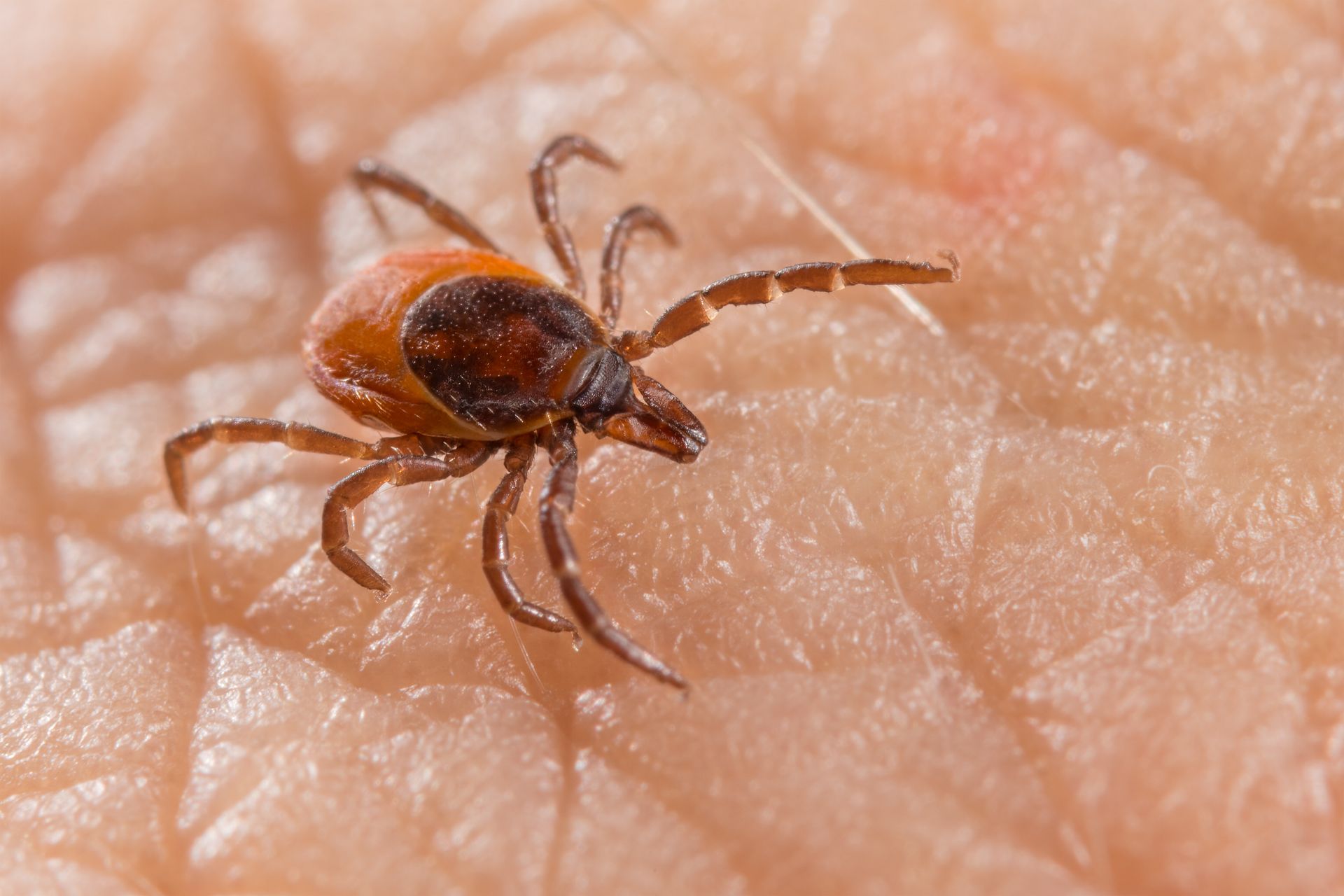
The groundhog tick, also known as the woodchuck tick or Ixodes Cookei, is primarily found in the eastern half of the United States. These ticks are light brown or blond in color and are about 1/8-inch long, or roughly the size of a sesame seed. Adult females typically have a darker brown or black shield on their back that is diamond shaped. Groundhog ticks feed on a variety of warm-blooded rodents and animals including groundhogs, cats, dogs, skunks, squirrels, raccoons, foxes, and weasels. They also occasionally feed on humans and domestic animals. These ticks are the primary vector for Powassan virus disease, a rare but potentially serious disease that can be transmitted to humans. The risk of encountering these ticks is higher in states in the northeastern portion of the U.S. including Maine and Pennsylvania.
Gulf Coast Tick
Adult gulf coast ticks are often confused with American dog ticks, but their heads are much more pronounced and the plate on their back is much lighter in color. Another thing that identifies this tick compared to the dog tick is their slightly lighter colored legs and white lines that are marked all over its shield. The gulf coast tick is primarily found along the eastern seaboard all the way down to the gulf coast and as far west as Oklahoma and Kansas. This tick species is particularly prevalent in prairies, grass meadows, and shady, wooded areas along the edge of forests. Gulf coast ticks are 3-host ticks that have three different hosts throughout their lifecycle. Adult stages prefer to feed on larger hosts including deer, cattle, and other livestock, while immature stages (nymphs and larvae) feed on small mammals and ground-dwelling birds. The different stages of gulf coast ticks are also known to feed on both humans and pets. A single female gulf coast tick can lay an average of over 8,000 eggs which makes them a particularly prolific species. This is problematic because the gulf coast tick is responsible for transmitting rickettsia parkeri rickettsiosis, a less severe form of rocky mountain spotted fever.
Lone Star Tick (Amblyomma Americanum)
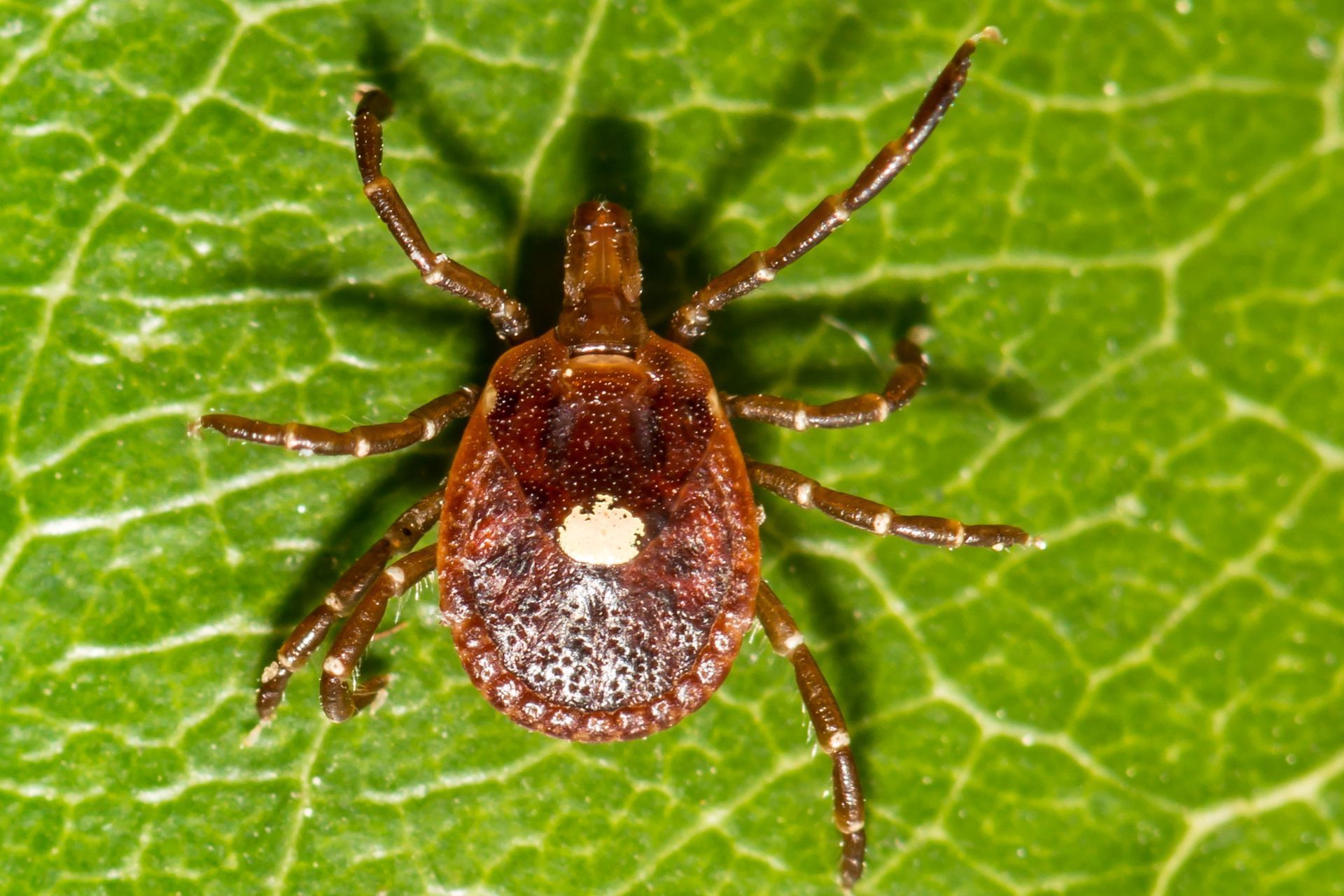
The lone star tick is primarily found in the southeastern and eastern U.S. This tick is a notoriously aggressive biter with the highest risk of bites occurring from early spring through late fall. Interestingly, the bite of the lone star tick has been associated with the development of a red meat allergy in some people, known as "alpha-gal" syndrome. This condition is increasingly being recognized as a health problem throughout the tick's geographic range. The lone star tick is also known to transmit the bacteria causing human monocytic ehrlichiosis, rocky mountain spotted fever, heartland virus disease, southern tick-associated rash illness (STARI), bourbon virus disease, and tularemia. The nymphal and adult stages can transmit these diseases, while the larvae do not carry disease-causing germs.
This tick is easily identifiable by its reddish-brown color and the distinctive white dot or "lone star" on the back of adult females. The lone star tick is found mostly in tall grass or at the tips of low-lying branches and twigs in woodland areas with dense undergrowth. They are also commonly found around animal resting areas like stables and barns.
Pacific Coast Tick (Dermacentor Occidentalis)
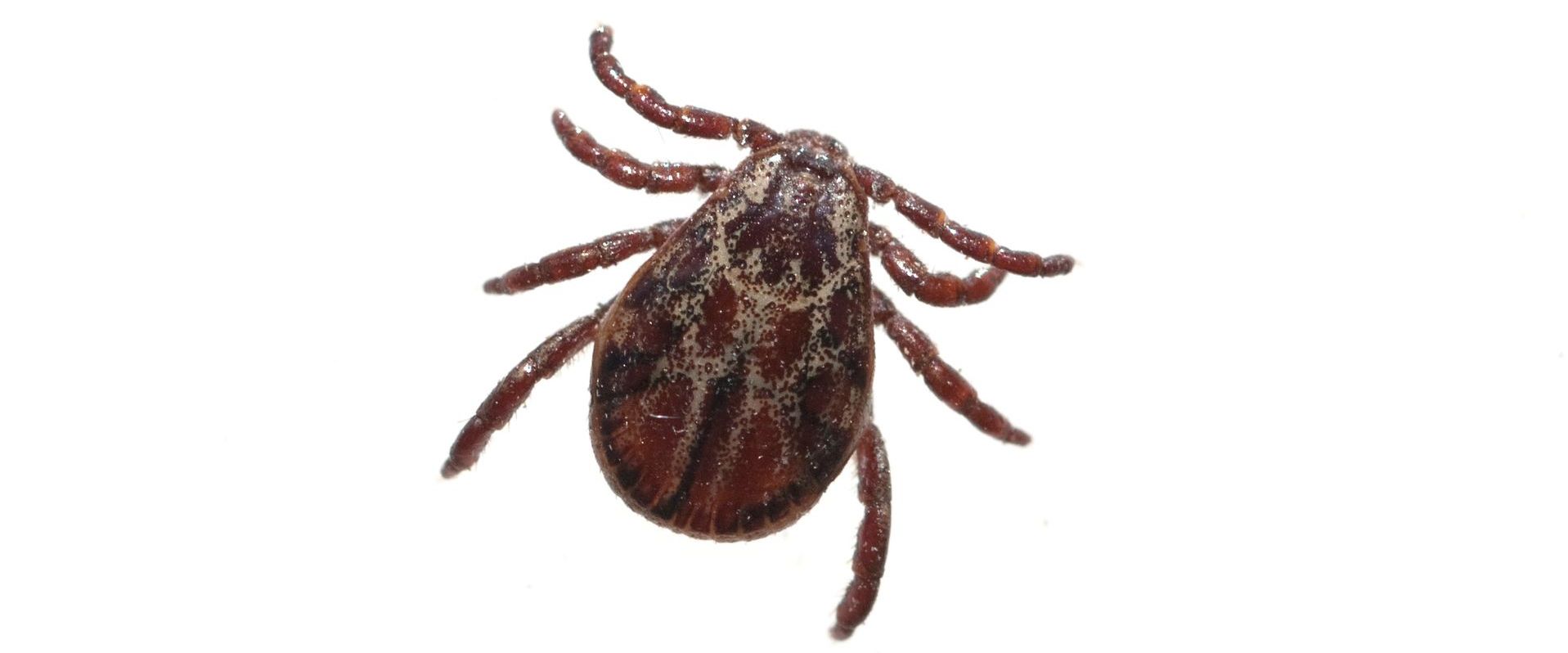
The pacific coast tick is prevalent in the Southwestern U.S. with its presence extending from Baja Mexico all the way up to Oregon. It is the most common tick found throughout California and is identified by its mottled brownish-black color. Due to the moderate climate they are found in, the pacific coast tick is active year-round. However, their activity peaks during cooler months like in April and May. They are predominantly found in shrublands, chaparral, and along trails and they are known to bite humans as well as pets, domesticated animals, and livestock. Male pacific coast ticks feed for short periods when they are ready to produce sperm while females will feed for up to 10 days before unlatching from their host to lay eggs. Eggs are laid about 3 weeks after the engorged adult detaches. The larvae and nymphs of pacific coast tick rarely attack humans or pets, but all life stages of this tick can transmit diseases. They are known to transmit rocky mountain spotted fever, Colorado tick fever virus (CTFV), pacific coast tick fever, q fever, rickettsia philippi (a spotted fever rickettsiosis), and tularemia.
Rocky Mountain Wood Tick (Dermacentor Andersoni)
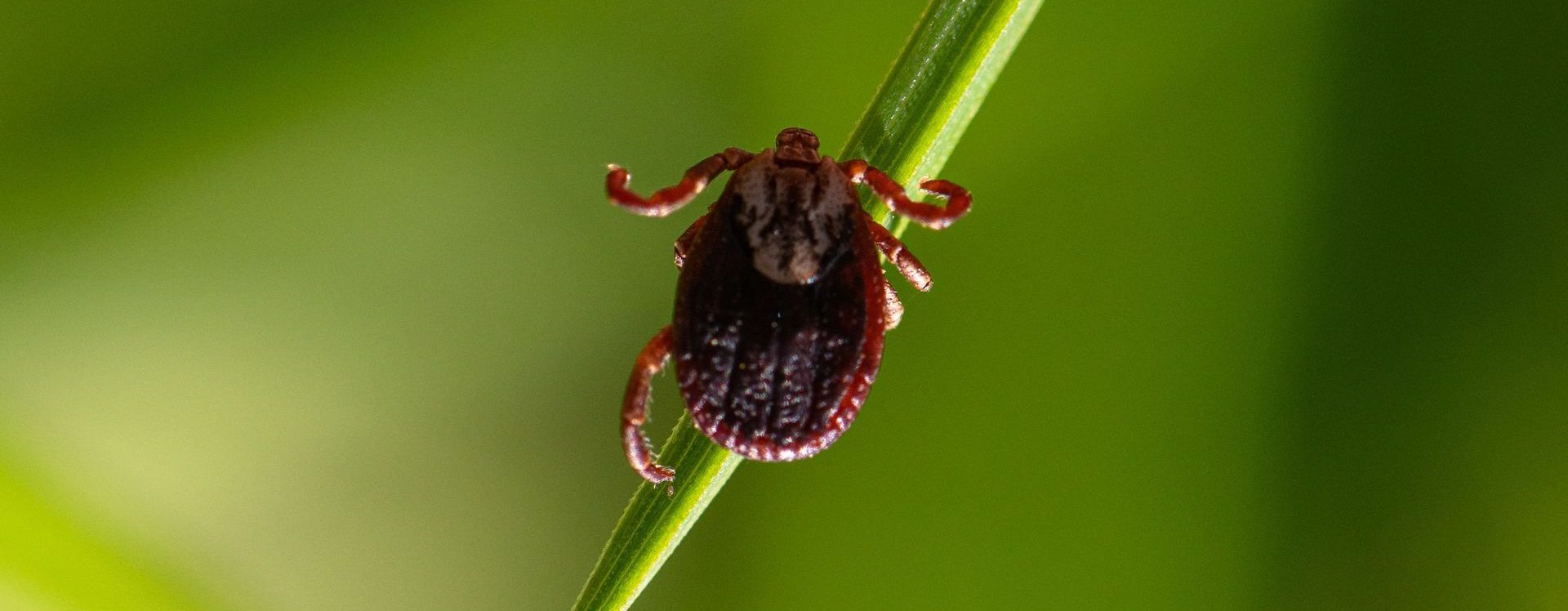
The rocky mountain wood tick is primarily found in the Rocky Mountain states and southwestern Canada. These ticks are known for its reddish-brown color and the cream-colored portion on the backs of adult males. It's worth noting that while these ticks appear quite similar to American dog ticks, microscopic examination is generally required to distinguish between the two. These ticks inhabit scrublands, lightly wooded areas, open grasslands, and trails that are typically in the mountains of the northwest Pacific regions at elevations above 4,000 feet. They can be active from January through November, but their activity drops during the hot and dry mid-summer months.
Adult wood ticks will seek out medium to large mammals like deer and livestock, but they are also known to feed on pets and humans. This is important to know because all stages of the rocky mountain wood tick can transmit Colorado tick fever virus (CTFV), rocky mountain spotted fever (RMSF), q fever, tularemia, and rickettsia (rickettsia rickettsii). The saliva of this tick also contains a neurotoxin that can sometimes cause tick paralysis in humans and pets, with symptoms usually dissipating within 24 - 72 hours after tick removal.
Asian Long Horned Tick
Asian long horned ticks were originally found in countries like eastern China, Japan, Eastern Russian, and Korea but have recently been identified in several eastern states in the United States. This tick is a potential vector for various serious human diseases, including anaplasmosis, babesiosis, ehrlichiosis, and rickettsiosis. Due to their new emergence in America, the exact risk this tick poses to humans in the U.S. is currently unknown. This makes it crucial to continue monitoring its spread and potential impact on public health.
Soft Ticks (Ornithodoros)
Soft ticks, scientifically known as Ornithodoros, are unique in their appearance and behavior. Unlike their hard-shelled counterparts, soft ticks have a raisin-like shape and lack a hard shell. They are primarily found throughout the western half of the United States going as far east as Texas. They are particularly prevalent in coniferous forests situated between 900 – 2,000 meters above sea level. These ticks are notorious for their nocturnal feeding habits and are often found biting unsuspecting victims as they sleep. These ticks feed briefly and painlessly which makes them difficult to detect. Despite their brief feeding period, they can still transmit diseases that cause significant health issues. Soft ticks are the primary vectors for two main North American agents of TBRF, borrelia hermsii and borrelia turicatae. While TBRF is rare, it is most common in mountainous regions, particularly in states like Washington, Oregon, California, Arizona, Colorado, and parts of Texas.
Western Blacklegged Tick (Ixodes Pacificus)
The western blacklegged tick, also known as Ixodes Pacificus, is primarily found along the U.S. pacific coast, extending from the northern coast of Washington down to the Mexico border in California. Their presence can also be felt as far east as Utah. They are typically encountered in grassland habitats, near water, along deer trails, and dense woodlands amongst fallen leaves and fallen logs or branches. The western blacklegged tick is known to transmit several tick borne diseases including Lyme disease, bartonella, anaplasmosis, babesiosis, and borrelia miyamotoi disease. All life stages of this tick can bite humans, but nymphs and adult females are thought to be the primary cause of illness in humans. Other common hosts for the western blacklegged tick also include squirrels, lizards, mice, voles, foxes, coyotes, and deer.
Cayenne Tick

The cayenne tick is primarily found in southern Texas in shrub and brushland habitats. There have also been recent sporadic reports of this tick in other states bordering the Gulf of Mexico which indicates that they are spreading eastward. The cayenne tick is much more common outside of the US and can commonly be found throughout various parts of Central America, South America, and the Caribbean.
Adult stages of the cayenne tick are recognized by their long mouthparts but are often confused with Gulf Coast ticks (Amblyomma maculatum) due to their similar appearance. Adult cayenne ticks are notorious for feeding on horses but are also commonly seen on deer, feral swine, livestock, and pets. Nymphs and larvae are known to feed on a different variety of hosts including turkey, quail, rodents, and other small to medium-sized mammals. All life stages of cayenne ticks are known to bite humans but despite their aggressive nature, human encounters with cayenne ticks are rare in the United States.
Winter Tick
The winter tick, unlike many other tick species, attaches to its host as a larva and remains attached throughout its life cycle. This species primarily feeds on large mammals including deer, moose, elk, cattle, and horses. Due to its unique life cycle, the winter tick is rarely encountered by campers or hikers. However, hunters may come across this tick in large numbers on deer carcasses. Despite its potential to carry diseases that affect large wild mammals, there is currently no evidence to suggest that the winter tick transmits diseases to humans.
How to Prevent and Deal with Tick Bites
Here are some key steps to prevent tick bites and diseases:
- Avoid areas that are known to be tick-infested or areas conducive to tick proliferation. If you find yourself in an area with tall grasses, overgrown shrubs, or low hanging branches, be sure to take appropriate steps to protect yourself.
- Wear protective clothing such as long-sleeved shirts, long trousers, boots or sturdy shoes, and a head covering. Light-colored clothing makes ticks easier to detect. Tuck trouser cuffs into socks and tape the area where pants and socks meet to prevent ticks from crawling under clothing.
- Apply insect repellent containing 10% to 30% DEET primarily to clothes and sparingly to exposed skin. Be sure to not spray DEET directly onto your face as the chemicals should not be allowed inside your eyes, nose, or mouth. Permethrin is another chemical pesticide that can be used to deter ticks, but this should only be applied to clothing and never onto exposed skin.
- When hiking, be sure to stay in cleared paths and trails and avoid coming into contact with overhanging shrubbery or branches. Be cautious in camping areas, especially if you sit on the ground or disturb leaf litter.
- Check yourself and others regularly for ticks whenever you find yourself in nature for extended periods of time. Check pets too if they spend time outdoors.
- Remove any ticks promptly. Use tweezers to grasp it firmly as close to the skin as possible and pull it straight out. Do not twist or jerk the tick. Dispose of ticks safely by placing them in a container of soapy water or alcohol, sticking them to tape, or flushing them down the toilet.
- Be sure to wash and disinfect the bite site using soap and water followed by an antiseptic.
- Be sure to seek medical attention if you develop a fever or other serious symptoms of a tick-borne illness. Inform doctors if you have been outdoors in areas where ticks were present or traveled to areas where tickborne diseases are common.
How to Prevent Tick Activity
To prevent tick activity, it's important to maintain an environment that is unattractive to ticks. Ticks can dry out if exposed to prolonged sunlight which is why they prefer to hide in tall grass and shrubs. By keeping lawns and yards well maintained, ticks won’t have as many places to hide. Regularly mow your grass and cut weeds to create an unfavorable environment for ticks. Additionally, clean up items that attract rodents, which can carry ticks. This includes spilled birdseed and hiding places like old wood piles. For areas that can’t be maintained properly, pesticides can be applied. Usually, one or two applications per season are enough to control ticks in these areas.
If you have pets that are allowed to roam freely or free-range livestock, they are much more likely to have ticks. If ticks are found on pets, consult a veterinarian for appropriate tick treatment. For ticks found indoors, remove them by vacuuming, seal the vacuum bag, and dispose of it in the trash. If you own a kennel or your home is infested with the brown dog tick, you may want to contact a professional pest control company for assistance. By taking these steps, you can significantly reduce tick activity and the risk of tick-borne diseases.
Contact EcoGuard if You Are Dealing with a Tick Problem
Ticks can pose a significant health risk and dealing with a tick infestation can be challenging. If you find yourself facing a tick problem, don't hesitate to reach out for professional help. EcoGuard Pest Management has the expertise and resources to effectively manage and eliminate tick infestations, ensuring the safety of your family and pets. Our team is dedicated to providing you with efficient, safe, and environmentally friendly pest control solutions. Remember, it's always better to act sooner rather than later when it comes to ticks. Contact EcoGuard Pest Management today and let us help you reclaim your home from these unwanted pests.




